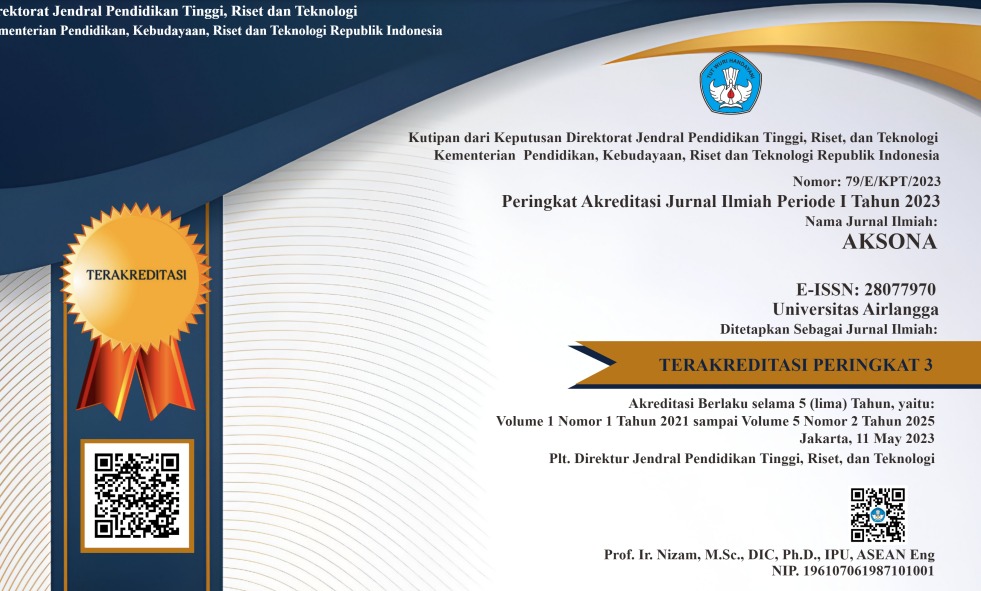Successful Management of Bilateral Subdural Hematoma: Combining Bilateral Middle Meningeal Arteries Embolization and Unilateral Burr Hole Craniostomy—A Case Report
Downloads
Highlight:
- The approach to bilateral SDH management was still tailor-made, especially in the elderly, due to the benefit of reducing intracranial pressure and the risk of increased complications and recurrent bleeding.
- In cases of bilateral SDH, middle meningeal artery (MMA) embolization before surgery may increase the favorable outcome and lower the risk of SDH rebleeding.
ABSTRACT
Introduction: Subdural hematoma (SDH) is frequently seen in the elderly population. Although anticoagulant use and traumatic brain injury are recognized risk factors, the exact cause of subdural hematomas in certain cases remains unknown. Furthermore, unilateral or bilateral hemispheres may be involved in SDH, which can occur acutely or gradually. The old age group’s SDH profile, which includes several comorbidities, may complacte surgery, the gold standard for treatment. Embolization of the middle meningeal artery (MMA) may be a treatment option because it is safer and has a higher success rate in terms of improvement compared to complications. It can be done as either a standalone procedure or an adjuvant to surgery. Case: An elderly male patient experienced acute left-sided weakness that worsened over three days. Imaging revealed bilateral SDH, with symptomatic chronic SDH on the right side, asymptomatic acute SDH on the left side, and midline shift. Bilateral MMA embolization was done, followed by burr hole craniostomy, which resulted in clinical and radiological improvement throughout a three-month post-intervention period. Conclusion:MMA embolization can improve clinical outcomes and prevent recurrent bleeding, which makes it a potential treatment option for severe symptomatic SDH, especially in patients with comorbidities.
Wang X, Song J, He Q, You C. Pharmacological treatment in the management of chronic subdural hematoma. Front Aging Neurosci. 2021; 13. doi: 10.3389/fnagi.2021.684501
Rudy RF, Catapano JS, Jadhav AP, Albuquerque FC, Ducruet AF. Middle meningeal artery embolization to treat chronic subdural hematoma. Stroke Vasc Interv Neurol. 2023; 3(1). doi: 10.1161/SVIN.122.000490
Solou M, Ydreos I, Gavra M, Papadopoulos EK, Banos S, Boviatsis EJ, et al. Controversies in the surgical treatment of chronic subdural hematoma: A systematic scoping review. Diagnostics. 2022; 12(9):2060. doi: 10.3390/diagnostics12092060
Zhang J, Fei Z, Feng H, Gao G, Hao J, Hou L, et al. Expert consensus on drug treatment of chronic subdural hematoma. Chinese Neurosurg J . 2021;7(1):47. doi: 10.1186/s41016-021-00263-z
Moshayedi P, Liebeskind DS. Middle meningeal artery embolization in chronic subdural hematoma: Implications of pathophysiology in trial design. Front Neurol. 2020 ;11. doi: 10.3389/fneur.2020.00923
Ahmed OEF, El Sawy A, El Molla S. Surgical management of chronic subdural hematomas through single-burr hole craniostomy: Is it sufficient? Egypt J Neurol Psychiatry Neurosurg. 2021; 57(1):136. doi: 10.1186/s41983-021-00368-3
Takahashi S, Yamauchi T, Yamamura T, Ogishima T, Arai T. Proposal of treatment strategies for bilateral chronic subdural hematoma based on laterality of treated hematoma. Asian J Neurosurg. 2018; 13(4):1134–9. doi: 10.4103/ajns.AJNS_124_18
Sila D, Casnati FL, Vojtková M, Kirsch P, Rath S, Charvát F. Middle meningeal artery embolization versus surgery in patients with chronic subdural hematoma—No more fence sitting? Neurol Int. 2023; 15(4):1480–8. doi: 10.3390/neuroint15040096
Catapano JS, Koester SW, Hanalioglu S, Farhadi DS, Naik A, Hartke JN, et al. Middle meningeal artery embolization associated with reduced chronic subdural hematoma volume and midline shift in the acute postoperative period. J Neurointerv Surg. 2024;16(5):478–81. doi: 10.1136/jnis-2022-020054
Catapano JS, Nguyen CL, Wakim AA, Albuquerque FC, Ducruet AF. Middle meningeal artery embolization for chronic subdural hematoma. Front Neurol. 2020;11. doi: 10.3389/fneur.2020.557233
Désir LL, D’Amico R, Link T, Silva D, Ellis JA, Doron O, et al. Middle meningeal artery embolization and the treatment of a chronic subdural hematoma. Cureus. 2021; 13(10):e18868. doi: 10.7759/cureus.18868
Orscelik A, Senol YC, Bilgin C, Kobeissi H, Arul S, Cloft H, et al. Middle meningeal artery embolization without surgical evacuation for chronic subdural hematoma: A single-center experience of 209 cases. Front Neurol. 2023;14. doi: 10.3389/fneur.2023.1222131
Sattari SA, Yang W, Shahbandi A, Feghali J, Lee RP, Xu R, et al. Middle meningeal artery embolization versus conventional management for patients with chronic subdural hematoma: A systematic review and meta-analysis. Neurosurgery. 2023;92(6):1142–54. doi: 10.1227/neu.0000000000002365
Lam A, Selvarajah D, Htike SS, Chan S, Lalloo S, Lock G, et al. The efficacy of postoperative middle meningeal artery embolization on chronic subdural hematoma – A multicentered randomized controlled trial. Surg Neurol Int. 2023;14:168. doi: 10.25259/SNI_208_2023
Ferber A, Zhou Y, Greenwald B. Persistent facial nerve palsy after middle meningeal artery embolization for subdural hematoma: A case report. Brain Inj. 2023;37(5):457–60. doi: 10.1080/02699052.2023.2166116
Khorasanizadeh M, Shutran M, Garcia A, Enriquez-Marulanda A, Moore J, Ogilvy CS, et al. Middle meningeal artery embolization for treatment of chronic subdural hematomas: Does selection of embolized branches affect outcomes? J Neurosurg. 2023; 138(6):1494–502. doi: 10.3171/2022.9.JNS221663
Catapano JS, Ducruet AF, Nguyen CL, Baranoski JF, Cole TS, Majmundar N, et al. Middle meningeal artery embolization for chronic subdural hematoma: An institutional technical analysis. J Neurointerv Surg. 2021; 13(7):657–60. doi: 10.1136/neurintsurg-2020-016552
Ku JC, Dmytriw AA, Essibayi MA, Banihashemi MA, Vranic JE, Ghozy S, et al. Embolic agent choice in middle meningeal artery embolization as primary or adjunct treatment for chronic subdural hematoma: A systematic review and meta-analysis. Am J Neuroradiol. 2023; 44(3):297–302. doi: 10.3174/ajnr.A7796
Mowla A, Abdollahifard S, Farrokhi A, Yousefi O, Valibeygi A, Azami P. Middle meningeal artery embolization with liquid embolic agents for chronic subdural hematoma: A systematic review and meta-analysis. J Vasc Interv Radiol . 2023;34(9):1493–500. doi: 10.1016/j.jvir.2023.05.010
Joyce E, Bounajem MT, Scoville J, Thomas AJ, Ogilvy CS, Riina HA, et al. Middle meningeal artery embolization treatment of nonacute subdural hematomas in the elderly: A multiinstitutional experience of 151 cases. Neurosurg Focus. 2020;49(4):E5. doi: 10.3171/2020.7.FOCUS20518
Copyright (c) 2025 Gameliel Wibowo Soetanto, Pieter Melchias Jacob Lilikwatil, Fritz Sumantri Usman

This work is licensed under a Creative Commons Attribution-ShareAlike 4.0 International License.





















